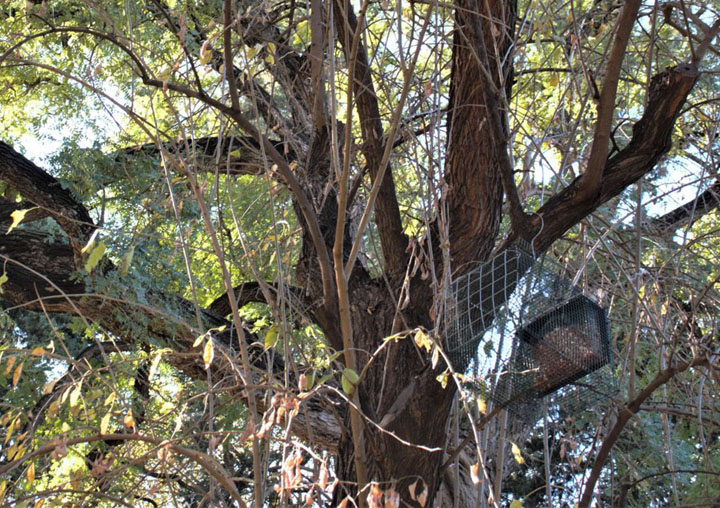A project of the University of Valencia analyses the green corridors of birds in Valencia, Barcelona and Toledo
- Press Office
- February 13rd, 2023

The Parus project, subsidised by the Ministry of Science and Innovation, analyses the urban green infrastructure, biodiversity and green corridors of birds in Valencia, Barcelona and Toledo, taking as standard species the great tit (Parus major). The main researcher of Parus is Emilio Barba, professor of Ecology in the University of Valencia, who proposed the initiative today to the vice-mayor and councillor of Urban Ecology of the Valencia City Hall, Sergi Campillo, accompanied by the director of the Botanical Garden, Jaime Güemes.
The investigation will end in 2024, it started in the Botanical Garden of the University of Valencia, where the first “feeding box” was installed. When activity is detected at the feeders, the birds are marked to obtain data on their behaviour, which is afterwards crossed with the characteristics of the wildlife corridors.
In the Botanical Garden, we searched for a place with minimal human presence, the forest area in the depths of the garden, for the installation of the cage. But in some other places, like the Turia Park, the cages have been placed in different contexts since it’s a busier garden area with higher light pollution. The data offered by the several feeder installations distributed around the green areas of the city will be different and it is hoped that its interpretation will provide solutions for the standard species, the great tit, as well as for the entire avifauna of the area.
The results can be the key to reconsider the reorganisation of the territory or the urbanism in the landscape of the metropolitan spaces and be used as a tool to find the most harmful dynamics and activities for the urban fauna. Furthermore, they will contribute to the creation of new models that would affect the biodiversity and would make life in the city healthier and more enjoyable. Lastly, as assured by Jaime Güemes, director of the Garden, it will be used to create new models of land restoration for the green areas in the cities.
Emilio Barba is an Ecology professor in the Faculty of Biological Science. He has a doctorate in Biological Science and a Master’s degree in Environmental Management and in Evaluation of the Environmental Impact Studies, currently develops his investigation in the Cavanilles Institute of Biodiversity and Evolutionary Biology of the University of Valencia, and he is the head of Initiatives to the Vice Rectorate of Sustainability, Cooperation and Healthy Life.
His line of research is focused on behavioural ecology and the bird population’s ecology, and he has published over a hundred scientifical articles, and participated and directed several research projects. He also works in applied aspects, and has directed flora and fauna studies, environmental impact evaluations, jobs of management of endangered species, etc. with enterprises or administrations.
In the project of the University of Valencia, collaborates as well the Museum of Natural Science of Madrid, which belongs to the Spanish National Research Council (CSIC for its acronym in Spanish), and the Museum of Natural Science of Barcelona.
In today’s meeting, Emilio Barba explained the project to Sergi Campillo, and asked for the City Hall’s collaboration for the permits to place the feeders, the accessibility to difficult areas, the citizens’ communication and participation…
The vice-mayor showed plenty of interest on the topic since it’s good to strengthen the urban ecology strategy and it is part of the perspectives for the Pla Verd and the biodiversity.
File in: Recerca, innovació i transferència , Jardí Botànic
















